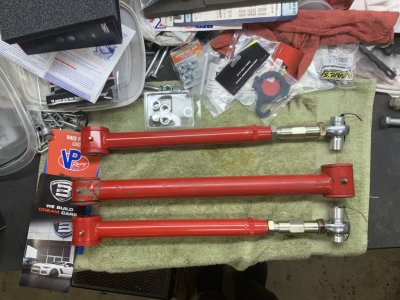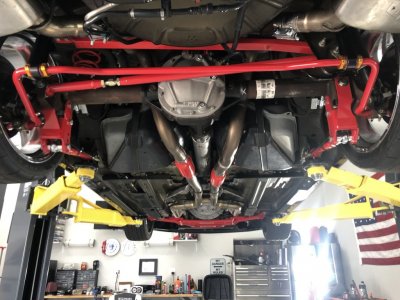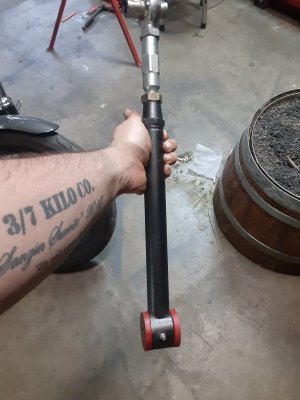Like Norm, I am not seeing the spherical end despite the possibly typical ebay misinformed description.
The WL LCAs have bushings that have a little more give than the poly bushings, which can bind at full articulation. I used to have the Steeda billet alloy non-adjustable ones with poly on one end and spherical/heim on the other and I can't feel a difference, to be honest. The Steedas are beautiful, though.
The WL LCAs have bushings that have a little more give than the poly bushings, which can bind at full articulation. I used to have the Steeda billet alloy non-adjustable ones with poly on one end and spherical/heim on the other and I can't feel a difference, to be honest. The Steedas are beautiful, though.





